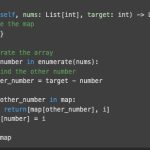Artificial Intelligence (AI) development relies heavily on efficient data handling. Traditional databases often struggle to handle the complexities of vector data, which are prevalent in AI applications such as natural language processing (NLP), image recognition, recommendation systems, and more. To address this challenge, developers are increasingly turning to vector databases, which are specifically designed to manage vector data efficiently.
With the emergence of vector databases, the landscape of AI development has experienced a significant shift. Vector databases offer unique advantages such as fast similarity searches, scalability, and support for diverse data types, making them invaluable tools for AI practitioners. In this article, we’ll delve into the significance of vector databases in AI development, and provide code examples utilizing both Oracle Database’s and MongoDB’s vector capabilities.
Understanding Vector Databases
Vector databases are specialized databases optimized for storing and querying vector data. They provide native support for vector operations, similarity searches, and indexing techniques tailored to high-dimensional data. This makes them well-suited for AI applications that deal with vectors, embeddings, and feature representations. There are number of vector databases that are fast evolving. Here are the list of databases:
- Analyticdb for PostgreSQL
- Azure AI Search
- Alibaba’s PolarDB
- Cassandra AstraDB
- Chroma
- Deep Lake
- Elastic Search
- Alibaba Hologres
- Kusto
- Milvus
- Mongodb
- Myscale
- Neon
- Pinecone
- Qdrant
- Redis
- SingleStoreDB
- Supabase
- Tair
- Typesense
- Weaviate
- Zilliz
I will write a separate article comparing the features of these vector databases on their storage and retrieval technology, their use cases and the cost differences.
Use Cases of Vector Databases in AI
We will go through few use cases where vector databases are used.
Natural Language Processing (NLP)
Vector databases are extensively used in NLP tasks such as document similarity, semantic search, and text classification. By storing word embeddings or document vectors in a vector database, developers can efficiently retrieve semantically similar documents or perform contextual searches. We will look at some details about document similarity, semantic search and text classification.
Document Similarity
Document similarity in Natural Language Processing (NLP) refers to the measurement of how similar two text documents are in terms of their content, meaning, or context. It is a fundamental task in NLP and has various applications, including information retrieval, document clustering, plagiarism detection, and recommendation systems.
Document similarity can be assessed using different methods and techniques, including:
- Cosine Similarity: One of the most commonly used measures for document similarity. It calculates the cosine of the angle between the vector representations of two documents in a high-dimensional space. Documents are typically represented as Bag-of-Words (BoW) vectors or TF-IDF vectors, where each dimension corresponds to a unique term in the vocabulary.
- Jaccard Similarity: Measures the similarity between two sets by comparing their intersection and union. In the context of document similarity, the Jaccard similarity is calculated as the size of the intersection of the sets of terms appearing in both documents divided by the size of the union of the sets.
- Word Embeddings: Word embeddings such as Word2Vec, GloVe, or FastText can be used to represent documents as dense, continuous-valued vectors in a high-dimensional semantic space. Document similarity can then be computed based on the similarity between the embeddings of the words in the documents, such as averaging or concatenating the word embeddings to represent the entire document.
- Topic Modeling: Techniques like Latent Semantic Analysis (LSA) or Latent Dirichlet Allocation (LDA) can be used to discover latent topics in a corpus of documents. Document similarity can then be measured based on the similarity of their topic distributions or representations.
- Word Mover’s Distance (WMD): A metric that measures the dissimilarity between two text documents based on the minimum amount of “work” required to transform one document’s word distribution into another’s. It considers not only the overlap of words between documents but also their semantics and context.
- BERT Embeddings: Pre-trained language models like BERT (Bidirectional Encoder Representations from Transformers) can generate contextualized embeddings for each word in a document. Document similarity can be computed based on the similarity between the embeddings of the entire documents, such as using cosine similarity or other distance metrics.
Document similarity is a crucial component in various NLP applications, enabling tasks such as finding similar documents in a corpus, identifying duplicate or near-duplicate content, clustering related documents together, and recommending relevant documents to users based on their preferences or search queries. The choice of method for measuring document similarity depends on factors such as the nature of the documents, the size of the corpus, and the computational resources available.
Semantic Search
Semantic search in Natural Language Processing (NLP) refers to the process of retrieving information from a text corpus based on the intended meaning of the query, rather than just matching keywords or phrases. Unlike traditional keyword-based search engines, which rely on exact word matches, semantic search aims to understand the context and underlying concepts behind the user’s query to provide more accurate and relevant search results.
The key components of semantic search include:
- Natural Language Understanding (NLU): Semantic search systems leverage advanced NLU techniques to comprehend the meaning and intent behind user queries. This involves parsing and analyzing the structure of the query, identifying entities, relationships, and concepts, and extracting relevant information to understand the user’s intent.
- Semantic Representation: Once the query is understood, it’s represented in a semantic space that captures the underlying meaning and context. This representation typically involves converting the query into a structured format such as semantic graphs, ontologies, or vector embeddings, which encode the relationships between words and concepts in a meaningful way.
- Semantic Matching: The semantic representation of the query is compared against the semantic representations of documents or data in the corpus. This matching process goes beyond simple keyword matching and takes into account the semantic similarity between the query and the documents. Techniques such as semantic indexing, semantic hashing, and similarity measures like cosine similarity are often used for semantic matching.
- Ranking and Retrieval: Based on the semantic similarity scores, the search engine ranks the documents in the corpus and retrieves the most relevant ones to present to the user. Documents that are semantically similar to the query are given higher rankings, ensuring that the most relevant results are displayed at the top of the search results.
Semantic search has numerous applications across various domains, including:
- Information retrieval: Finding relevant documents, articles, or web pages based on user queries.
- Question answering: Providing direct answers to user questions by understanding the semantics of the query.
- Personalized recommendations: Suggesting relevant products, services, or content based on user preferences and interests.
- Enterprise search: Facilitating efficient search and retrieval of internal documents, emails, and other enterprise data.
- Conversational agents: Enhancing the conversational capabilities of virtual assistants and chatbots by enabling them to understand and respond to user queries in a more contextually relevant manner.
Overall, semantic search plays a crucial role in improving the accuracy, relevance, and user experience of search engines and information retrieval systems by understanding the semantics of user queries and content in the corpus.
Text Classification
Text classification in Natural Language Processing (NLP) is the process of automatically categorizing or labeling text documents into predefined categories or classes based on their content. It’s a fundamental task in NLP and has widespread applications in various domains such as sentiment analysis, spam detection, topic categorization, and document classification.
The process typically involves the following steps:
- Data Collection: Gathering a dataset of text documents with their corresponding labels or categories. These documents can be articles, emails, reviews, tweets, etc.
- Data Preprocessing: Cleaning and preprocessing the text data to make it suitable for analysis. This may include tasks such as tokenization, removing punctuation, converting text to lowercase, removing stop words, and stemming or lemmatization.
- Feature Extraction: Converting the text data into numerical features that can be used as input to machine learning algorithms. Common techniques for feature extraction include Bag-of-Words (BoW), Term Frequency-Inverse Document Frequency (TF-IDF), and word embeddings like Word2Vec or GloVe.
- Model Training: Selecting a suitable machine learning algorithm or deep learning architecture for the task and training it on the labeled dataset. Popular algorithms for text classification include Naive Bayes, Support Vector Machines (SVM), Logistic Regression, and neural network architectures like Convolutional Neural Networks (CNNs) or Recurrent Neural Networks (RNNs).
- Model Evaluation: Evaluating the trained model’s performance using metrics such as accuracy, precision, recall, F1-score, and confusion matrix on a separate validation or test dataset. This helps assess how well the model generalizes to unseen data and whether it’s suitable for deployment.
- Deployment: Integrating the trained model into a production system or application where it can be used to classify new incoming text data in real-time.
Text classification is a challenging task due to the inherent complexity of natural language, including ambiguity, variability, and context dependence. However, with advances in machine learning and NLP techniques, text classification models have achieved impressive performance across a wide range of applications, driving innovation in areas such as customer support, content recommendation, and information retrieval.
Image Recognition
In image recognition tasks, deep learning models often generate high-dimensional feature vectors to represent images. Vector databases enable fast similarity searches to identify visually similar images, support content-based image retrieval (CBIR), and facilitate image clustering for organizational purposes.
Content Based Image Retrieval
Content-based image retrieval (CBIR) is a technique used to search for images within a collection based on their visual content rather than relying on textual metadata or human annotations. In CBIR, the search is performed by comparing the visual features of the query image with those of the images in the database to find the most visually similar ones.
The key components of content-based image retrieval include:
- Feature Extraction: The first step in CBIR is to extract descriptive features from the images in the database and the query image. These features capture various aspects of the image’s visual content, such as color, texture, shape, and spatial layout. Common techniques for feature extraction include Histogram of Oriented Gradients (HOG), Color Histograms, Local Binary Patterns (LBP), and Convolutional Neural Networks (CNNs) for generating image embeddings.
- Feature Representation: Once the features are extracted, they need to be represented in a suitable format for comparison. This typically involves transforming the raw feature vectors into a more compact and informative representation, such as histograms, vectors, or embeddings.
- Similarity Measure: The next step is to compute the similarity between the query image and the images in the database based on their feature representations. Various distance metrics can be used for this purpose, such as Euclidean distance, Cosine similarity, or Pearson correlation coefficient. The choice of similarity measure depends on the nature of the features and the specific requirements of the application.
- Ranking and Retrieval: Finally, the images in the database are ranked based on their similarity to the query image, and the top-ranked images are retrieved and presented to the user as search results. The ranking can be based on the similarity scores computed using the chosen distance metric, with higher scores indicating greater similarity.
Content-based image retrieval has numerous applications in areas such as image search engines, digital asset management, medical image analysis, surveillance systems, and fashion and e-commerce. By enabling users to search for images based on their visual content, CBIR systems provide a powerful and intuitive way to access and explore large collections of images.
Recommendation Systems
Vector databases power recommendation systems by storing user preferences, item embeddings, or collaborative filtering vectors. They enable real-time recommendation generation based on user behavior, item similarities, and personalized preferences.
Real Time Recommendation Generation
Real-time recommendation generation refers to the process of dynamically generating personalized recommendations for users in real-time based on their current context, behavior, preferences, and other relevant factors. Unlike traditional batch recommendation systems that generate recommendations periodically or offline, real-time recommendation systems provide recommendations instantly as users interact with a platform or application.
The key characteristics of real-time recommendation generation include:
- User Context: Real-time recommendation systems leverage real-time user data and context, such as browsing history, interactions, location, device, time of day, and current session activity, to generate personalized recommendations tailored to each user’s current needs and interests.
- Dynamic Adaptation: Real-time recommendation systems continuously adapt and update their recommendations in response to changes in user behavior, preferences, and the evolving nature of the content catalog. This dynamic adaptation ensures that recommendations remain relevant and timely over time.
- Scalability and Performance: Real-time recommendation systems are designed to handle large volumes of data and deliver recommendations with low latency, typically in milliseconds or seconds. This requires scalable and high-performance architectures that can process and analyze user data in real-time.
- Personalization: Real-time recommendation systems prioritize personalization, providing each user with recommendations tailored to their individual preferences, tastes, and interests. This personalization is achieved through sophisticated machine learning algorithms that model user behavior and preferences based on historical data.
- Feedback Loop: Real-time recommendation systems incorporate user feedback and interactions to improve the quality and relevance of recommendations over time. By analyzing user responses, such as clicks, likes, purchases, and feedback, the system can learn and refine its recommendations to better meet user needs.
- Multi-channel Delivery: Real-time recommendation systems support multi-channel delivery, enabling recommendations to be delivered across various touchpoints and platforms, including websites, mobile apps, email, social media, and messaging platforms. This ensures a consistent and seamless user experience across different channels.
Real-time recommendation generation has numerous applications across various industries, including e-commerce, content streaming, social media, online advertising, and personalized marketing. By providing users with relevant and timely recommendations, real-time recommendation systems enhance user engagement, increase conversion rates, and drive revenue for businesses.
Anomaly Detection
Vector databases aid in anomaly detection applications by storing feature vectors representing normal and anomalous behavior. Developers can efficiently identify deviations from normal patterns, detect outliers, and trigger alerts or actions based on predefined thresholds.
Time Series Analysis
For time series data, vector databases allow for efficient storage and retrieval of multi-dimensional time series embeddings. They enable similarity-based searches across time series, pattern recognition, and forecasting tasks.
Implementation with Oracle Database
Oracle Database offers powerful vector capabilities through its in-memory option. Let’s consider an example where we use Oracle Database to store and query high-dimensional vectors representing images. We’ll create a table to store image vectors and perform a similarity search to find similar images.
-- Oracle Database Example Code
-- Create a table to store image vectors
CREATE TABLE image_vectors (
image_id NUMBER PRIMARY KEY,
vector BLOB
);
-- Insert sample image vectors
INSERT INTO image_vectors VALUES (1, EMPTY_BLOB());
INSERT INTO image_vectors VALUES (2, EMPTY_BLOB());
-- Update image vectors with actual data (for demonstration purposes)
DECLARE
img1 BLOB := utl_raw.cast_to_raw('ImageVectorData1');
img2 BLOB := utl_raw.cast_to_raw('ImageVectorData2');
BEGIN
UPDATE image_vectors SET vector = img1 WHERE image_id = 1;
UPDATE image_vectors SET vector = img2 WHERE image_id = 2;
COMMIT;
END;
/
-- Define function to compute similarity between two vectors
CREATE OR REPLACE FUNCTION compute_similarity(vec1 IN BLOB, vec2 IN BLOB)
RETURN NUMBER
AS
PRAGMA AUTONOMOUS_TRANSACTION;
BEGIN
-- Implementation of similarity computation (e.g., cosine similarity)
-- This is a placeholder for actual implementation
RETURN DBMS_RANDOM.VALUE; -- Placeholder for demo purposes
END;
/
-- Query to find similar images
SELECT image_id
FROM (
SELECT image_id, compute_similarity(vector, :query_vector) AS similarity
FROM image_vectors
ORDER BY similarity DESC
)
WHERE ROWNUM <= 5; -- Limit to top 5 similar images
Implementation with MongoDB
MongoDB, with its flexible document-based data model and robust querying capabilities, is well-suited for implementing a vector database. Here’s a step-by-step guide to implementing a vector database using MongoDB:
Step 1: Data Modeling
Define a schema to represent vector data in MongoDB. Each document can store a vector along with any additional metadata.
// Sample document schema for storing vector data
{ _id: ObjectId(""),
vector: [0.1, 0.5, -0.3, ...],
// Vector representation metadata: { // Additional metadata fields }
}
Step 2: Indexing
Create indexes on the vector field to enable efficient similarity searches and queries.
// Create an index on the vector field db.vectors.createIndex({ vector: "2dsphere" })Step 3: Inserting Data
Insert vector data into the MongoDB collection.
// Insert a document with vector data db.vectors.insertOne({ vector: [0.1, 0.5, -0.3, ...], metadata: { /* Additional metadata */ } }) ```Step 4: Querying
Perform similarity searches or other vector-based queries using MongoDB’s querying capabilities.
// Find documents similar to a given vector const queryVector = [0.2, 0.4, -0.1, ...];
const similarityThreshold = 0.8;
db.vectors.find({ vector: { $geoWithin: { $centerSphere: [queryVector, similarityThreshold / 6371] } } })
Here is a code block to do for Similarity Search
// Connect to MongoDB
const MongoClient = require('mongodb').MongoClient;
const url = 'mongodb://localhost:27017';
const dbName = 'mydb';
MongoClient.connect(url, { useNewUrlParser: true, useUnifiedTopology: true }, async function(err, client) {
if (err) throw err;
console.log("Connected successfully to MongoDB");
const db = client.db(dbName);
const collection = db.collection('document_vectors');
// Insert sample document vectors
await collection.insertMany([
{ _id: 1, vector: [0.1, 0.2, 0.3] },
{ _id: 2, vector: [0.4, 0.5, 0.6] }
]);
// Define function to compute similarity between two vectors
function computeSimilarity(vec1, vec2) {
// Placeholder for similarity computation (e.g., cosine similarity)
// This is a placeholder for actual implementation
return Math.random(); // Placeholder for demo purposes
}
// Query to find similar documents
const queryVector = [0.2, 0.3, 0.4];
const similarDocuments = await collection.aggregate([
{ $project: { _id: 1, similarity: { $function: { body: computeSimilarity.toString(), args: ["$vector", queryVector], lang: "js" } } } },
{ $sort: { similarity: -1 } },
{ $limit: 5 }
]).toArray();
console.log("Similar documents:", similarDocuments);
// Close the connection
client.close();
});
Conclusion
Vector databases offer a powerful solution for managing high-dimensional data in AI applications, enabling efficient storage, retrieval, and querying of vector representations. By leveraging MongoDB as a vector database, developers can harness the flexibility and scalability of NoSQL databases while efficiently handling vector data. Whether it’s NLP, image recognition, recommendation systems, or anomaly detection, vector databases empower AI developers to build robust and scalable solutions. Incorporate vector databases into your AI projects to unlock new possibilities in data management and processing, ultimately leading to more accurate and intelligent AI applications.
Author Michael Rajendran can be reached at [email protected].
References
- Oracle Database Documentation: Oracle Database In-Memory
- MongoDB Documentation: MongoDB Atlas
- Amazon Redshift Documentation: Amazon Redshift
- Faiss GitHub Repository: Facebook AI Similarity Search






